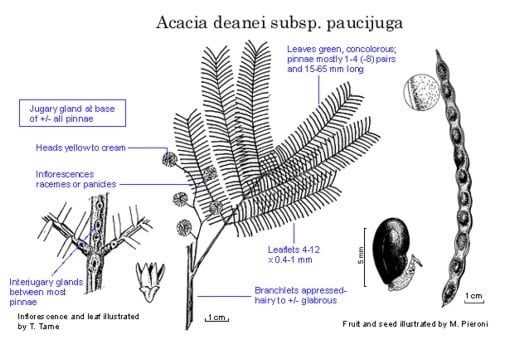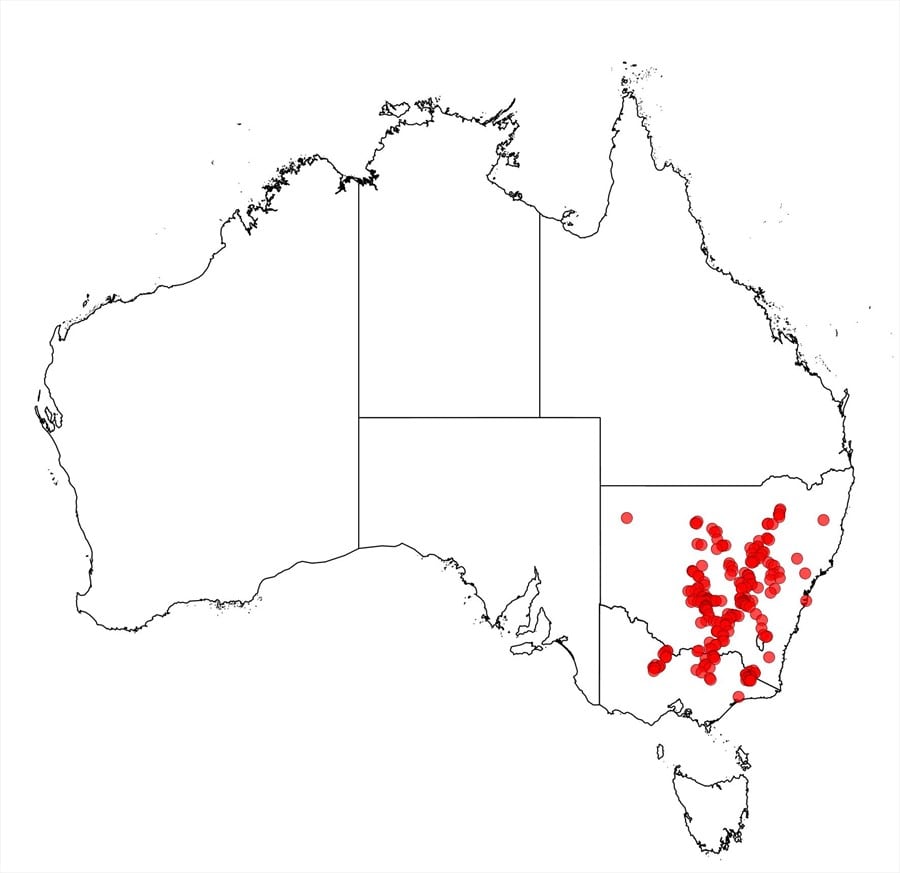Acacia deanei subsp. paucijuga (F.Muell. ex N.A.Wakef.) Tindale
WATTLE
Acacias of Australia
Family
Fabaceae
Distribution
Occurs in N.S.W. on the plains, slopes and tablelands (N to Lightning Ridge, W to Rankins Springs), and S to central Vic.; common in the Snowy R. valley S to Wedderburn.
Description
Branchlets appressed-puberulous to glabrous. Leaves: petiole 0.5–3 cm long; rachis with 1–3 interjugary glands between most or all pairs of pinnae; pinnae 1–8 or more pairs (often only 1–4 pairs with petiole length longer relative to rachis length than in subsp. deanei), 1.5–6.5 cm long; pinnules mostly 4–12 mm long, 0.4–1 mm wide, glabrous or with scattered hairs, the upper pinnules mostly truncate at apex. Calyx barely lobed, with tube ±glabrous. Corolla ±glabrous.
Phenology
Flowers throughout the year; fruits Oct.–Mar., sometimes till May.
Habitat
Grows on red soil plains, dry stony hillsides, rocky gorges and valley floors, in sandy or gravelly clay soils.
Specimens
N.S.W.: 9.5 km NE of Rankin Springs, R.G.Coveny 12027 & P.Hind (A, B, MO, NSW, NY, PERTH, Z); 4.8 km E of Weethalle, M.D.Tindale s.n. (NSW63792). Vic.: Suggan Buggan, E Gippsland, N.A.Wakefield 4805 (MEL, NSW); Snowy R., 9 km due S from Willis, N.G.Walsh 3452 (MEL, MO, NSW); Melville Caves, off Kingower–Wedderburn road, K.L.Wilson 1045 & L.A.S.Johnson (MEL, NSW).
Notes
The branchlets and leaves in subsp. paucijuga are mostly less hairy than in subsp. deanei, as well as the pinnules being usually longer and more separated.
FOA Reference
Data derived from Flora of Australia Volumes 11A (2001), 11B (2001) and 12 (1998), products of ABRS, ©Commonwealth of Australia
Author
M.D.Tindale, P.G.Kodela
Minor edits by B.R.Maslin & J.Reid
This identification key and fact sheets are available as a mobile application:
URL: https://apps.lucidcentral.org/wattle/
© Copyright 2018. All rights reserved.







